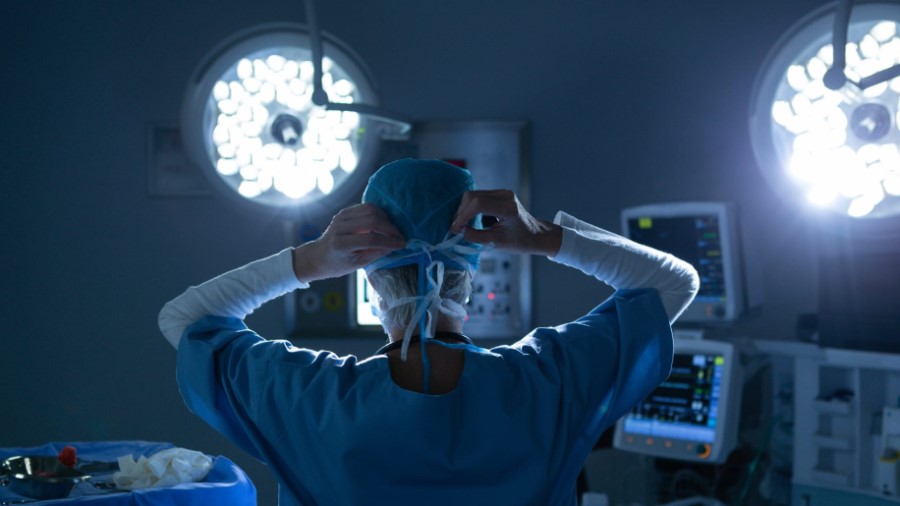
What is a colonoscopy?
Colonoscopy is a procedure that lets your healthcare provider check the inside of your entire large intestine or colon.
The procedure is done using a long, flexible tube (a colonoscope). The tube has a light and tiny camera on one end. It is put in your rectum and moved into your colon.
In addition to letting your provider see the inside of your colon, the tube can be used to:
- Clean the lining of your colon with a water jet (irrigate)
- Remove any liquid stool with a suction device
- Inject air in your bowel to make it easier to see inside
- Work inside your bowel with surgical tools
During a colonoscopy, your provider may remove tissue or abnormal growths (polyps) for further examination. He or she may also be able to treat problems that are found.
What is the colon?
The large intestine or colon is the last section of your digestive system. It absorbs water to change waste from liquid to solid stool. The large intestine is about 5 feet long in adults. It has 4 sections:
- Ascending colon. This extends upward on the right side of your belly.
- Transverse colon. This extends from the ascending colon across your body to the left side.
- Descending colon. This extends from the transverse colon downward on your left side.
- Sigmoid colon. This is named because of its S-shape. It extends from the descending colon to your rectum.
The rectum joins the anus. This is the opening where stool passes out of your body.
Why might I need a colonoscopy?
Colonoscopy can help your provider look for problems in your colon. These include any early signs of cancer, red or swollen (inflamed) tissue, open sores (ulcers), and bleeding.
Colonoscopy is also used to screen for colorectal cancer. Screening means looking for cancer in people who don’t have any symptoms of the disease.
A colonoscopy may be used to check and if needed treat things such as:
- Colon polyps
- Tumors
- Ulceration
- Redness or swelling (inflammation)
- Pouches (diverticula) along the colon wall
- Narrowed areas (strictures) of the colon
- Any objects that might be in the colon
It may also be used to find the cause of unexplained, long-term (chronic) diarrhea or bleeding in the GI (gastrointestinal) tract. It can also be used to check the colon after cancer treatment.
Colonoscopy may be used when other tests (such as a barium enema, CT colography, tests for blood in stool, stool DNA tests, or sigmoidoscopy) show the need for more testing.
Your healthcare provider may have other reasons to recommend a colonoscopy.
What are the risks of a colonoscopy?
As with any invasive procedure, complications may happen. Complications related to colonoscopy include, but are not limited to:
- Continued bleeding after tissue sample (biopsy) or polyp removal
- Nausea, vomiting, bloating, or rectal irritation caused by the procedure or by the bowel cleansing that is done before
- Bad reaction to pain medicine or the medicine used to relax you (sedative)
- A hole punched through (perforation of) the intestinal wall. This is rare.
You may have other risks, depending on your condition. Be sure to discuss any concerns with your provider before the procedure.
How do I get ready for a colonoscopy?
Your healthcare provider will explain the procedure to you. Ask him or her any questions you have.
You may be asked to sign a consent form that gives permission for the procedure. Read the form carefully and ask questions if anything is not clear.
You must not eat or drink for a certain time before the procedure. This often means no food or drink after midnight or a restricted schedule with the laxative and water sips allowed until a couple hours before the colonoscopy. You may be given additional instructions about a special diet to follow for 1 or 2 days before the procedure. It is absolutely mandatory to follow your particular instructions carefully to avoid the procedure being cancelled, and to make sure of a safe, effective test.
Tell your provider if you are sensitive to or allergic to any medicines, latex, tape, or anesthesia medicines (local and general).
Tell your provider about all the medicines you take. This includes both over-the-counter and prescription medicines. It also includes vitamins, herbs, and other supplements.
Tell your provider if you have a history of bleeding disorders. Let your provider know if you are taking any blood-thinning medicines, aspirin, ibuprofen, or other medicines that affect blood clotting. You may need to stop taking these medicines before the procedure.
Tell your provider if you are pregnant or think you may be pregnant.
Your healthcare provider will give you instructions on how to prepare your bowel for the test. You may be asked to take a laxative, an enema, or a rectal laxative suppository. Or you may have to drink a special fluid that helps clean out your colon.
If you have a heart valve disease, you may be given disease-fighting medicines (antibiotics) before the procedure.
You will be given pain medicine and a medicine to relax you (a sedative) before the procedure. Someone must drive you home.
Follow any other instructions your provider gives you to get ready.
What happens during a colonoscopy?
You may have a colonoscopy as an outpatient or as part of your stay in a hospital. The way the test is done may vary depending on your condition and your healthcare provider's practices.
Generally, the colonoscopy follows this process:
- You will be asked to remove any jewelry or other objects that might get in the way during the procedure.
- You may be asked to remove your clothing. If so, you will be given a gown to wear.
- An IV (intravenous) line will be inserted in your arm or hand. A sedative or a pain medicine will be injected into the IV.
- You will be given oxygen to breathe in.
- Your heart rate, blood pressure, respiratory rate, and oxygen level will be checked during the procedure.
- You will be asked to lie on your left side with your knees pulled up towards your chest.
- A greased (lubricated) tube will be put into your anus and moved into your rectum and colon. You may feel mild pain, pressure, or cramping during the procedure. A sedative is used to reduce your discomfort.
- Depending on the type of anesthesia used, you may be completely asleep during the procedure. If awake, you may be asked to take slow, deep breaths while the tube is being inserted. This helps to relax your abdominal muscles and decrease the discomfort. You may also be asked to change your position to help the tube pass through.
- Air may be injected into your bowel. This may make it easier to see the inside surfaces. A water jet may also be used to clean the lining of your colon. A suction device may be used to remove any liquid stool.
- The healthcare provider will check your colon and may take photos. If a polyp is seen, it may be taken out. Or it may be left there until another procedure is done.
- After the procedure is over, the tube will be taken out.
What happens after a colonoscopy?
After the procedure, you will be taken to the recovery room to be watched. Your recovery process will depend on the type of sedative you had. Once your blood pressure, pulse, and breathing are stable and you are awake and alert, you will be taken to your hospital room. Or you may be discharged to your home.
You can usually eat whatever you feel you can tolerate after the procedure. Some people start with small, bland meals, and some people do not.
You may pass gas (be flatulent) and feel gas pains after the procedure. This is normal. Walking and moving about may help to ease any mild pain.
You should not drink alcohol for at least 24 hours. You may be asked to drink extra fluids to make up for the water you lost as you got ready for the procedure.
Tell your provider if you have any of the following:
- Fever or chills
- Frequent bloody stools
- Belly pain or swelling
- Your belly feels hard
- Not able to pass gas
Your healthcare provider may give you other instructions, depending on your situation.
Next steps
Before you agree to the test or the procedure make sure you know:
- The name of the test or procedure.
- The reason you are having the test or procedure.
- What results to expect and what they mean.
- The risks and benefits of the test or procedure.
- What the possible side effects or complications are.
- When and where you are to have the test or procedure.
- Who will do the test or procedure and what that person’s qualifications are.
- What would happen if you did not have the test or procedure.
- Any alternative tests or procedures to think about.
- When and how will you get the results.
- Who to call after the test or procedure if you have questions or problems.
- How much will you have to pay for the test or procedure.

